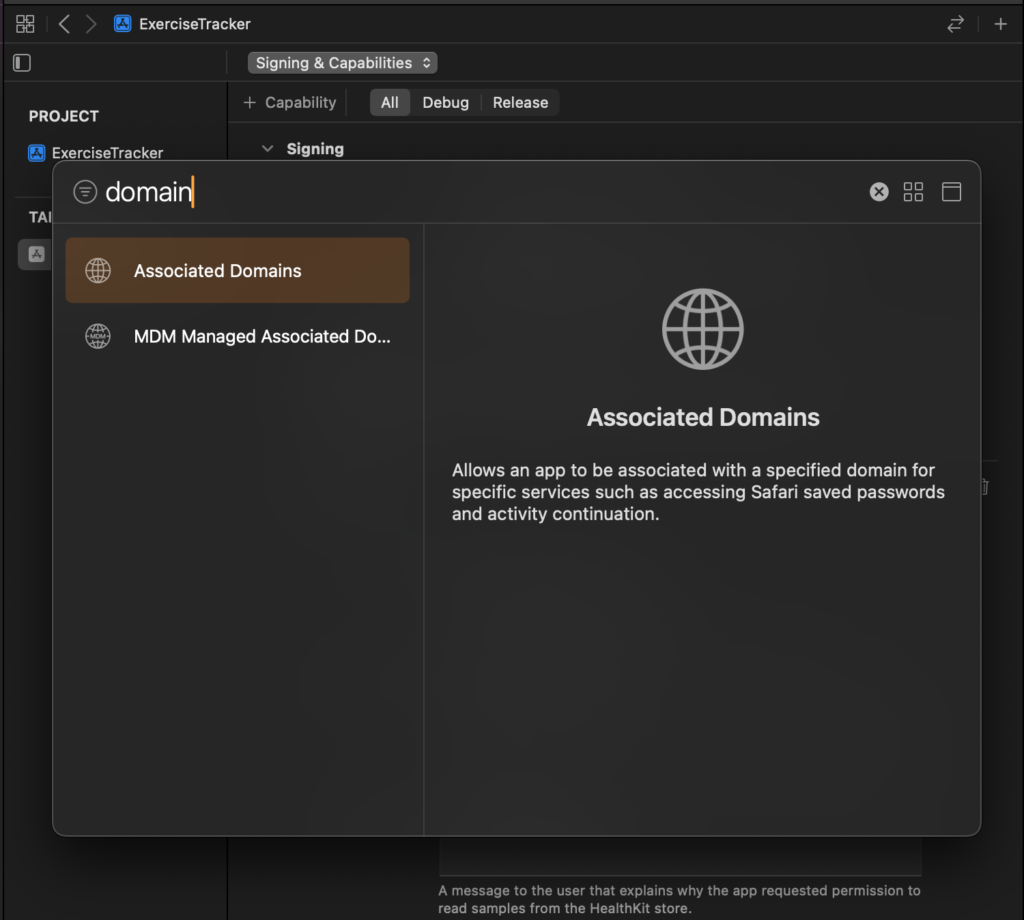Permitting different apps and webpages to hyperlink into your app with deeplinks is a very great way so that you can make your app extra versatile, and to make sure that customers of your app can extra simply share content material with others by sharing direct hyperlinks to your contents.
To help deeplinking on iOS, you’ve got two choices obtainable:
- Assist deeplinking by customized URL schemes like
maxine://exercise/dw-1238-321-jdjd - Assist deeplinking by Common Hyperlinks which might appear like this
/maxine-app/exercise/dw-1238-321-jdjd
So as to add help for choice one, all you should do is register your customized URL scheme and implement onOpenURL to deal with the incoming hyperlinks. This strategy is printed in my publish on dealing with deeplinks in a SwiftUI app, so I received’t be together with detailed steps for that on this publish.
This publish will as a substitute concentrate on displaying you how one can set your app up for choice 2; Common Hyperlinks.
We’ll take a look at the necessities for Common Hyperlinks, how one can allow this on the server, and lastly we’ll see how one can help Common Hyperlinks in your app.
The main good thing about Common Hyperlinks is that solely the proprietor of a website can set up a hyperlink between an app and a website. In distinction, while you choose a customized URL scheme, different apps can attempt to declare the identical scheme. The primary app that claimed the scheme on a given person’s machine might be used to deal with URLs with that particular scheme.
With Common Hyperlinks, you’ve got full management over which apps are allowed to say a given area or path. So in my case, I can be sure that solely Maxine might be used to deal with URLs that begin with /maxine-app/.
Establishing your server for Common Hyperlinks
Each app that desires to help Common Hyperlinks should have a server counterpart. This implies you can solely help Common Hyperlinks for domains you personal.
When a person installs your app, iOS will verify for any claims that the app makes about Common Hyperlinks. For instance, if my app claims to help then iOS will carry out a verify to verify this declare is appropriate.
To try this, iOS will make a request to https://www.donnywals.com/apple-app-site-association. Each app that helps Common Hyperlink should return a legitimate JSON response from /apple-app-site-association.
Within the JSON that’s returned by this endpoint, the server will specify which apps are allowed to deal with Common Hyperlinks for this area. It will possibly additionally specify which paths or parts ought to or shouldn’t be handled as Common Hyperlinks.
We’ll take a look at a few examples on this publish however for a full overview of what you may and may’t do in your app website affiliation file you may check out the applinks documentation on apple.com.
If I had been so as to add help for Common Hyperlinks to my very own area, A easy app website affiliation I might add would look as follows:
{
"applinks": {
"particulars": [
{
"appIDs": ["4JMM8JMG3H.com.donnywals.ExerciseTracker"],
"parts": [
"/": "/maxine/*"
]
}
]
}
}This JSON specifies the appID that’s allowed for use on this area. I additionally specify a parts array that can specify patterns for which URLs ought to be redirected to my app. You’ll be able to specify a number of completely different guidelines right here as you may see on the web page for parts.
On this case, I specified that my app will deal with any URL that begins with /maxine/. The * on the finish implies that we enable any sequence of characters to return after /maxine/.
When you’ve made your /apple-app-site-association obtainable in your website, you may go forward and configure your app for Common Hyperlinks.
Establishing your app for Common Hyperlinks
With a purpose to inform iOS about your intent to deal with Common Hyperlinks, you should add the Related Domains functionality to your undertaking. Do that by choosing your app Goal, navigate to Signing and Capabilities and add Related Domains.

After doing this, you should register your area utilizing the applinks: prefix. For instance, if I wish to open hyperlinks hosted on donnywals.com I want to put in writing applinks:donnywals.com.

When putting in my app, Apple will navigate to my area’s apple-app-site-association file to confirm that my app is allowed to deal with hyperlinks for donnywals.com. If every part checks out, opening hyperlinks for donnywals.com/maxine/ would open Maxine since that’s the trail that I configured in my JSON file.
Testing Common Hyperlinks
Common Hyperlinks are finest examined by tapping on hyperlinks in your machine. I usually have a Notes file with hyperlinks that I wish to take a look at. You can too use a device like RocketSim for those who’re searching for a fast strategy to take a look at hyperlink dealing with on the simulator.
Be aware that generally Debug builds don’t instantly work with Common Hyperlinks. Particularly when including help after having put in the app beforehand. Reinstalling the app can generally remedy this. In any other case a reboot can work wonders too.
When every part works, your app’s onOpenURL view modifiers ought to be referred to as and also you’ll be handed the complete URL that your app is requested to deal with.
To study extra about onOpenURL, check with my publish on dealing with deeplinks on iOS.
Common Hyperlink finest practices
Whenever you add help for Common Hyperlinks you implement a dependable approach for customers to open sure hyperlinks in your utility. That stated, customers can select not to observe the hyperlink into your app and keep of their browser as a substitute.
When a person refuses to navigate to your app, you wish to be sure that they’ll (at the least) see among the contents that they had been purported to see. Or, on the very least you wish to be sure that a person understands that they opened a hyperlink that was purported to take them to your app.
You’ll be able to host HTML content material on the routes that you just’d usually redirect to your app. In some circumstances meaning you may present the very same content material that the person would see within the app. In different circumstances, you would possibly present a web page that tells the person that they need to both obtain your app or allow Common Hyperlinks in your app once more in settings.

